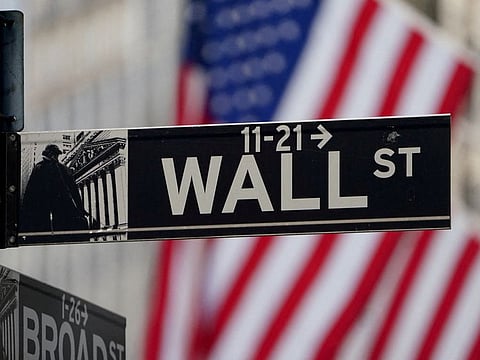Wall Street stock traders refuse to break in week of treasury turmoil
Almost $3 trillion has been erased from US equity values since July

New York: Wall Street stock traders have absorbed every blow this week, from ever-surging Treasury yields, relentless Federal Reserve hawkishness, dramas in commodities, and more. For all that, it’s a wonder just how well the equity-investing landscape is holding up.
After the 10-year Treasury yield hit its highest level since 2007, the S&P 500 escaped with a modest gain - the first in a month while the Nasdaq 100 is up 1.75 per cent for the week. Big doses of bond turbulence have failed to ignite broader gauges of risk across assets, with the Cboe Volatility Index down for three sessions. Pain thresholds across indebted Corporate America have edged up but are sending out sanguine signals compared with past bouts of strain.
With Jerome Powell unwavering in his war against inflation, “something is likely to break,” warns Mohamed El-Erian, adviser to Allianz. In markets, so far, it hasn’t. The question of how far investors can be pushed is an urgent one with debate raging about what Powell and his colleagues will do at their next meeting. At present, the message is that more than 5 percentage points of monetary tightening - while bruising - has yet to inflict any incurable wounds.
Underpinning the resilience is a view that the economy remains strong enough for financial markets to withstand higher borrowing costs. It’s not everyone’s base case. Yet Friday’s trading session - in which good news on hiring was treated as good news for equities - shows that view is driving market sentiment.
“Equities can actually do well in a world where yields on the US 10-year are north of 4 per cent,” said Art Hogan, chief market strategist at B. Riley Wealth. “If the reason for the higher yields is because we have a resilient economy and labor market - versus some mistake the Fed might do with monetary policy - then that likely drives revenue and earnings growth and will ultimately be a positive for markets.”
None of this is to say investors haven’t suffered or that the road ahead is likely to be placid. Almost $3 trillion has been erased from US equity values since July, and while that’s made equities cheaper, earnings-based valuations for the S&P 500 remain higher than last year’s October and June bottoms.
More bond drama could be in store. Fed Governor Michelle Bowman this week said that multiple interest-rate hikes may be required to get inflation down to the Fed’s goal, while Bank of Cleveland President Loretta Mester sees the case for another hike again in 2023.
For all that, credit markets refuse to buckle. Alongside the turmoil in Treasuries, US investment-grade corporate bond spreads widened to a still-modest 127 basis points this week, versus 370 in the early days of the pandemic. Meanwhile crude oil posted its biggest drop since March, easing fears that the supply side of the economy will fuel an inflationary comeback.
And of course, surging Treasury yields don’t intrinsically spell doom for stocks. Hogan, for one, points to the 1990s, when the yield on the US 10-year averaged 6.65 per cent. The S&P 500 performed exceedingly well during that spell. And between 1985 and 2005, for instance, inflation-adjusted yields averaged 3.5 per cent, well above the current 2 per cent, with the S&P 500 managing to return 15 per cent per year, according to a Bank of America Corp. team of strategists led by Savita Subramanian.
Bank of America’s global cross-asset market risk indicator remains at an almost neutral level, significantly below the prints seen during the banking turmoil and the pandemic bear market. While options traders in bonds are in panic mode, their counterparts in commodities, equities and currencies remain sanguine.
“If bond yields come down, then the markets can hold up as equity valuations have fallen from September,” said Janet Mui, head of market analysts at RBC Brewin Dolphin. “Data needs to slow but not slow too much.”
Another linchpin of the equities bull case is profit strength stemming from Corporate America. US earnings-revision momentum ticked higher for a second straight month in September. Overall, analysts expect S&P 500 earnings to rise 6.5 per cent in the fourth quarter compared with a year earlier, according to data compiled by Bloomberg Intelligence.
“Long term, earnings drive stocks,” Julian Emanuel, chief equity and quantitative strategist at Evercore ISI, wrote in a note. “As much focus as there is on yields right now, earnings season begins in a week and the flip side of unanticipated 3Q economic strength is that 3Q earnings will likely surprise to the upside.”
Sign up for the Daily Briefing
Get the latest news and updates straight to your inbox







